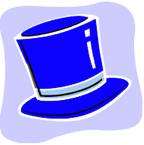Six Thinking Hats: The Blue Hat
The following includes excerpts regarding the Blue Hat from the book Six Thinking Hats by Edward De Bono
Introduction
The blue hat is for thinking about thinking! It essentially sets the thinking “strategy.”
It is used to:
- Manage thinking
- Organize thinking
- Control the process
It is under the blue hat that the agenda or sequence of use of the other hats is laid out. It is used to ensure that people keep to the relevant hat. The blue hat also announces a change of hats.
At the end, the blue hat asks for the outcome. It may come in the form of a summary, conclusion, decision, etc.
During the final blue hat, the next steps may be identified and laid out. These might be action steps or further thinking on some points.
Control of Thinking
- Thinking about thinking
- Instructions for thinking
- The organization of thinking
- Control of the other hats
When using the blue hat, you are no longer thinking about the subject; instead, you are thinking about the thinking needed to explore the subject.
The six hats method is concerned with a mapmaking type of thinking in which the terrain is first explored and noted. Then the possible routes are observed and finally a choice of route is made.
Those involved in a situation will claim that their thinking on the matter is taking place all the
time and not just when they sit down for a formal discussion. At this point, we are getting close
to the argument type of debate.
The author points out that mapmaking thinking on different views are designed rarely is the case.
Thinking is used for support not exploration.
Focus
- Asking the right questions
- Defining the problem
- Setting the thinking tasks
The difference between a good thinker and a poor thinking often lies in the ability to focus.
A focus can be broad or it can be narrow. The important thing about focus is that it should be spelled out in a definite manner.
The blue hat is used to bring about definition of the focus. It is
used to monitor any drift from this focus.
Time spent thinking about the thinking is not time wasted!
Asking a question is the simplest way of focusing thinking.
Careful attention to the framing and focus of a question is an important aspect of blue hat thinking.
- Fishing questions – used to explore, not sure what might turn up
- Shooting questions – used to check out a point (has a direct yes or no answer)
A problem is really only a special type of question: how do we achieve this? The definition of the problem is important; otherwise the solution may be irrelevant or unnecessarily cumbersome. Is this the real problem? Why do we want to solve this problem? What is the underlying problem?
Instead of presuming to find the best problem definition, it is more practical to set out a range of alternative definitions.
The blue hat is also used to set specific thinking tasks.
When a thinking task can’t be carried out, then a note of the failure needs to be made.
Program Design
Step by step.
- Software for thinking
- Choreography
The program will vary from situation to situation. The blue hat thinker customizes the program to fit the situation.
Summaries & Conclusions
- Observation and overview
- Comment
- Summaries, conclusions, harvesting and reports
The blue hat thinker is looking at the thinking that is taking place. He is the choreographer who designs the steps, but he is also the critic who watches what is happening.
The blue hat thinker is also noting the route that is being taken.
The blue hat thinker can make comments on what he or she observes.
The blue hat thinker gives an overview of what has been happening and what has been acieved.
The blue hat thinker pulls into shape what may seem to have been a chaotic discussion.
The blue hat thinker pulls together the final conclusion(s).
